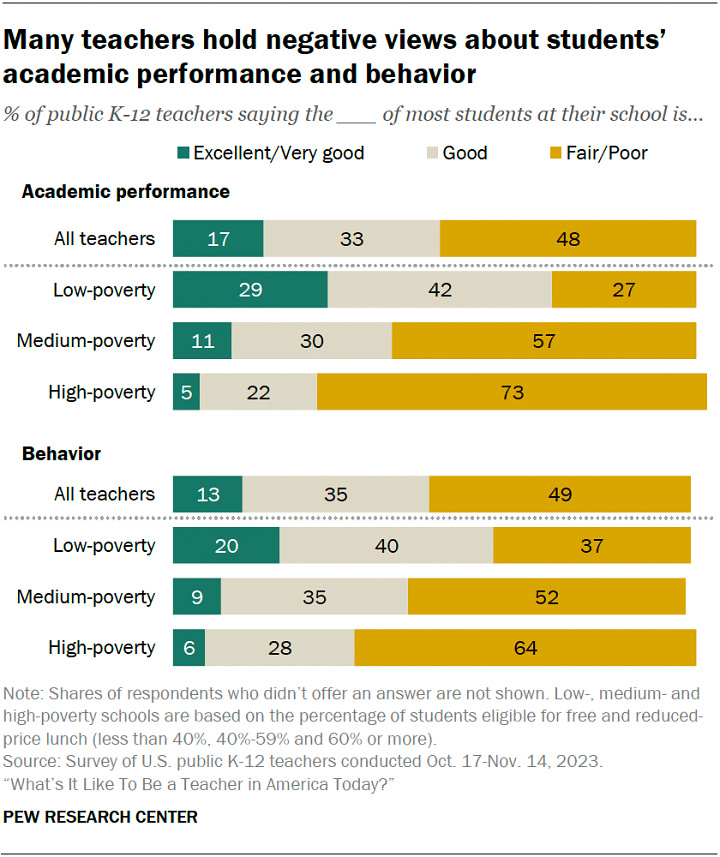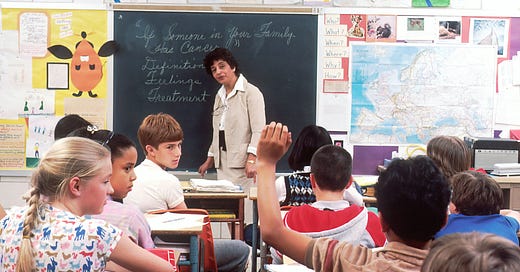The Long Tail of Covid
Kids and schools are still feeling the impact of school shutdowns and the covid years
Photo by National Cancer Institute on Unsplash
When schools shut down in March 2020, I sounded the alarm in the mainstream press, on substack, on social media, and at my own school board meetings. I used any platform and joined forces with groups of like-minded people to call attention to the crisis at hand. I was in full panic mode for almost two years.
I have slight scars from being discounted when I was absolutely right. I still want an apology from both national and local leaders about what they did to American children, including my own. However, I have to admit that I’m a bit surprised that the damage is continuing. Honestly, I thought that students would have caught up with academics by now, and that the social-emotional issues would have been repaired. Sadly, the issues from the prolonged school closure are lingering longer than anybody expected.
Research shows that academics and the social-emotional well-being of America’s young people has not bounced back from the pandemic lows. As students struggle in school, public schools are getting hit with new problems, including decreasing students and the evaporation of federal covid funds. Families that took their kids out of public schools during the pandemic have not returned. Buckle up, the new few years are going to be a bumpy ride.
I have done tons of newsletters with links to research about covid learning lag. Just in the past month, we’ve gotten more research on this issue, as well on related problems.
New research from Pew shows that the vast majority of teachers in low-income schools rate the academic performance (73%) at their schools as fair or poor. The majority of teachers (64%) describe the behavior at their school as fair or poor. The vast majority of teachers (82%) told Pew Research Center that the pandemic was the cause of these problems.


The four-day school week was touted as a solution for teacher burnout and staffing problems. New research shows that less time in school has a detrimental impact on student learning. Shocker, I know.
School absenteeism is a huge problem in the post-covid era. When schools were shutdown, kids got lazy about going, and parents got lazy about making them go. Kids have a lot more anxiety about taking tests and doing real work again, so the parents keep them home. This problem isn’t just an urban problem. Even wealthy communities are have having trouble getting “butts in the seats”.
Some parents might not recognize that keeping their kids home from school is a problem. Sometime parents don’t actually know what’s best for their kids. Research, not parental emotion, should be driving decision-making.
The New York Times has not been on the forefront of breaking education news in recent years. Their coverage of education during the pandemic was disappointing. Yet, even they now are reporting on the ongoing damage.
A variety of data — about children’s academic outcomes and about the spread of Covid-19 — has accumulated in the time since. Today, there is broad acknowledgment among many public health and education experts that extended school closures did not significantly stop the spread of Covid, while the academic harms for children have been large and long-lasting. While poverty and other factors also played a role, remote learning was a key driver of academic declines during the pandemic, research shows — a finding that held true across income levels.
Their recent article “What the Data Says About Pandemic School Closures, Four Years Later” has tons of good data and charts. Worth a read.
So, why haven’t the kids bounced back. I thought kids were resilient. (ha) I thought that the federal government gave billions to the schools to help bring kids up. (ha)
Well, the schools spent that money, but not on the kids. They used it to repair broken buildings, start new flashy programs, and a million other pet projects of dubious value. Now that federal influx of cash is ending. Schools across the country are going to cut programs and staff, because they won’t have the funds to pay the bills.
Cuts may have to happen, even if funding isn’t a problem, because there are fewer kids in public schools than before the pandemic. Some kids are not showing up to the school building, because of the absentee problems that we already talked about. But most disturbingly, there are just fewer kids enrolled in public schools than before the pandemic.
Research from the Brookings Institute shows that the pandemic resulted in a big jump in homeschooling and private schools. Other research shows that the disenrollment was highest among upper income white and Asian families; they left during the pandemic, and they have not come back. Some younger families aren’t even bothering with public school at all and going straight to the homeschool option.
In addition, there are simply demographic issues. People aren’t making babies anymore. A friend of mine with five kids in their late 20s and 30s recently lamented that she still isn’t a grandmother and thinks that it may never happen. The birth rate in America started plummeting 15 years ago and never stopped.
So, there are fewer kids enrolled in public schools since the pandemic. Some kids are playing their Xbox at home. Others are being homeschooled on the computers. Some are in plaid uniforms in Catholic schools. Then, add in the regular shift in childbirth trends. Fewer kids in public schools means school closures and disruption.
Post-pandemic, the remaining kids who are in school aren’t getting a great education, according to teachers themselves and national research. Students have major anxiety and behavior problems. Even the most clueless parents, who blissfully baked their sour dough bread during the pandemic and insisted that their kids were fun, are admitting that their kids have problems now.
The pandemic had a profound impact on all aspects of American life. It has shifted how we spend money and where we work. It also changed up the lives of American children and how we educate them. I wish I could end this newsletter with a silver lining, but I can’t.
LINKS
Richard V. Reeves: Why do women dominate colleges now?
Derek Thompson writes about the social benefits of religious communities. “Maybe religion, for all of its faults, works a bit like a retaining wall to hold back the destabilizing pressure of American hyper-individualism, which threatens to swell and spill over in its absence."
Sometimes church on Sunday is the only time that my son with autism is around other human beings on weekends. He’s got nothing else going on between Friday and Sunday. We attend mass partially for social reasons.
Colleges are inching towards the $100,000 sticker price.
On my disability newsletter, I explained to parents how they can qualify for disability benefits for their adult children.
Personal: I’ve been working my ass off setting up a new support system for parents with autistic children. So far, all my work has been for free, but that’s going to change next week. Easter pictures. Ian is going to Landmark College. The boiler broke last night; $1,800 repair - ugh.
Viewing: Fargo, Three Body Problem






